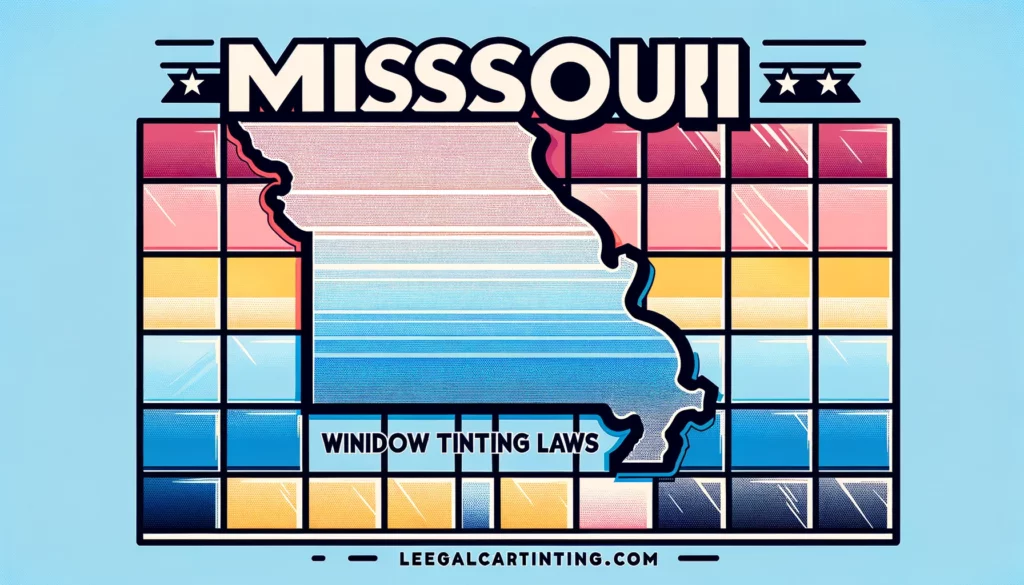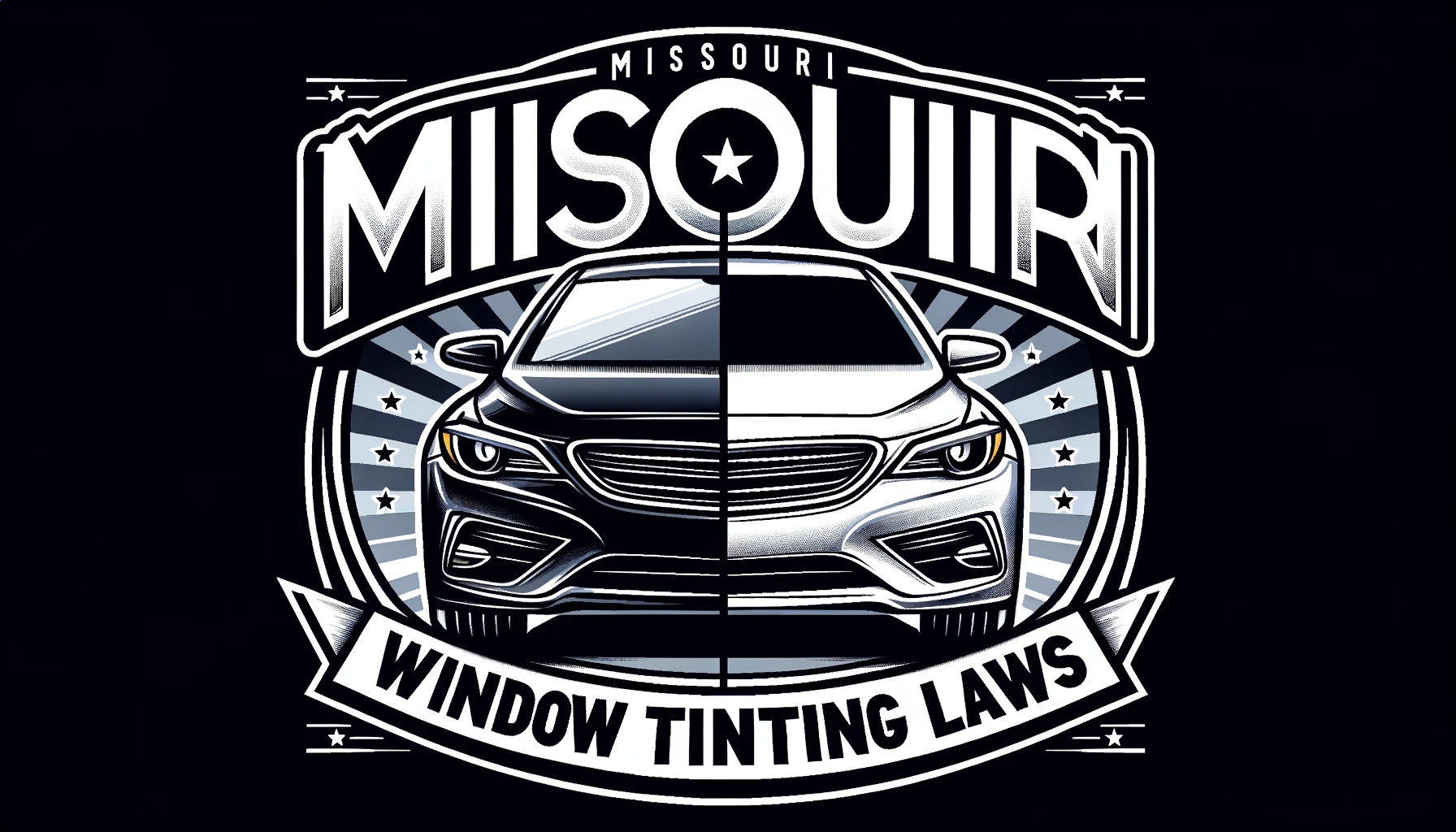Darkest legal tint for Sedans in Missouri
- Windshield: Only non-reflective tint is permitted above the manufacturer’s AS-1 line.
- Front Side Windows: The tint must allow more than 35% of light to pass through.
- Back Side Windows & Rear Window: There are no specific darkness restrictions; any darkness level is permissible.
Darkest legal tint for SUV and Vans in Missouri
- Windshield: Non-reflective tint is allowed above the manufacturer’s AS-1 line.
- Front Side Windows: Tint should allow more than 35% of light in.
- Back Side Windows & Rear Window: Any level of darkness can be applied.
Missouri Tinting Regulations

Missouri, like many states, has specific regulations when it comes to window tinting for vehicles. These laws ensure the safety of drivers, passengers, and pedestrians. If you’re considering getting your vehicle’s windows tinted in Missouri, it’s essential to be aware of these laws to avoid potential fines and ensure your vehicle is compliant. Let’s dive into the details.
A Brief History
Missouri’s window tinting laws were first enacted in 2002. Since then, they have provided guidelines for vehicle owners regarding how dark or reflective their window tints can be.
The amount of visible light that’s allowed through your car windows is termed as VLT (Visible Light Transmission). The VLT percentage varies depending on the type of vehicle – sedan or SUV/van.
Window Tint Reflection in Missouri
Reflective window tints can help in reducing glare and heat. However, Missouri has set limits on how reflective your tint can be.
For Sedans & SUVs/Vans:
- Front Side Windows: Reflectiveness should not exceed 35%.
- Back Side Windows: Reflectiveness should not be more than 35%.
Additional Tinting Rules in Missouri
Apart from the darkness and reflection rules, Missouri has several other regulations related to window tinting:
- Side Mirrors: If the back window is tinted, the vehicle must have dual side mirrors.
- Restricted Colors: Missouri does not ban any specific tint colors.
- Tint Variance: A variance of 3% is allowed.
- Certificates: Film manufacturers are not required to certify the films they sell in the state.
- Stickers: No specific sticker is needed to identify legal tinting.
- Medical Exceptions: For individuals with specific medical conditions, Missouri permits special tinting exemptions.
It’s crucial to note that while these are the state-wide regulations, local counties or places of residence in Missouri might interpret these laws differently. Always double-check with local DMV or law enforcement authorities to ensure full compliance.
Medical Exemptions for Missouri Tint Laws
Certain medical conditions make individuals more sensitive to sunlight. For these individuals, the standard window tinting regulations might not offer adequate protection. Recognizing this, Missouri has provisions that allow for darker tints than what’s typically permitted.
What Missouri Law Says
Missouri’s window tinting laws, established in 2002, have a specific mention of medical exemptions. The state allows individuals with certain medical conditions to have special tints that might otherwise be deemed illegal for regular vehicles.
Who Qualifies?
While the exact list of qualifying conditions can vary and might be subject to change, common conditions that might qualify for an exemption include:
- Photosensitivity: Some individuals have an increased sensitivity to light due to various medical conditions. This can lead to severe discomfort or even health risks when exposed to sunlight.
- Melanoma or Skin Cancer Patients: Individuals who have had skin cancers or are at a high risk might require additional protection from the sun’s rays.
- Other Skin Disorders: Certain skin disorders can be aggravated by direct sunlight, necessitating darker window tints.
How to Apply?
If you believe you qualify for a medical exemption:
- Consult Your Physician: Your doctor will need to provide documentation confirming your medical condition and the necessity for a darker window tint.
- Submit Documentation: Once you have the necessary medical documentation, you’ll need to submit it to the appropriate Missouri state department for review.
- Stay Compliant: Even with a medical exemption, there might be specific guidelines on how dark your tint can be. Ensure you’re still within the permissible limits set for medical exemptions.
Renewals and Validity
Medical exemptions might not be permanent. Depending on the nature of your medical condition, you might need to renew your exemption periodically. Always keep your documentation up-to-date and readily available, especially if you’re traveling outside of Missouri, as law enforcement in other states might not be familiar with Missouri’s medical exemption provisions.
Window Film Certificates and Stickers In Missouri
Certificates and stickers serve as a means of verification. They help law enforcement officers quickly identify if the window tint on a vehicle is compliant with state regulations. This speeds up routine checks and ensures that vehicles with tints that might be darker or more reflective than usual (due to medical exemptions or other reasons) are easily identifiable.
Missouri’s Stance on Certificates
In Missouri, manufacturers of window tint film are not required to certify the film they sell within the state. This means that as long as the tint meets the state’s VLT (Visible Light Transmission) and reflectivity standards, it doesn’t matter which manufacturer produced it.
What About Stickers?
Missouri does not mandate the use of stickers to identify legal tinting. In some states, a sticker is placed on the vehicle, often on the driver’s side doorjamb, to indicate that the tint is compliant with state regulations. However, in Missouri, no such sticker is required. This makes the process a bit simpler for vehicle owners, but it also means that during inspections or routine stops, law enforcement might take a closer look to ensure compliance.
Staying Compliant
Even though Missouri doesn’t require certificates or stickers, it’s essential to ensure that your window tint complies with the state’s regulations regarding darkness and reflectivity. Always keep any documentation related to your window tint, especially if you have a medical exemption that allows for darker tints. This can be helpful during inspections or if you’re questioned about your tint.
Penalties or Ticket Cost for Illegal Window Tint in Missouri

Missouri’s window tint regulations were established to ensure the safety of all road users. Properly tinted windows allow drivers to see out, and more importantly, allow law enforcement to see in during traffic stops. Overly dark or reflective tints can hinder this visibility, leading to potential safety concerns.
The Cost of Non-Compliance
While the exact ticket cost can vary based on the county or municipality, getting caught with illegal window tint in Missouri can result in a fine. The amount can range from a nominal fee to several hundred dollars, depending on the severity of the violation and whether it’s a repeat offense.
In addition to the monetary penalty, you might be required to remove the illegal tint from your vehicle, which can be an added expense. Some jurisdictions might also add points to your driving record, which can impact your insurance rates.
Avoiding Penalties
To avoid these penalties:
- Stay Informed: Familiarize yourself with Missouri’s window tint regulations. Ensure you know the allowed Visible Light Transmission (VLT) percentages for different windows on your vehicle.
- Work with Professionals: If you’re getting your windows tinted, choose a reputable service provider familiar with Missouri’s regulations.
- Regular Checks: Over time, window tint can fade or change. Periodically check your tint to ensure it remains within legal limits.
- Keep Documentation: If you have a medical exemption that allows for darker tints, always keep the necessary documentation in your vehicle. This can help avoid misunderstandings during traffic stops.
Conclusion
Missouri’s window tinting laws aim to balance the benefits of tinting, like UV protection and privacy, with safety concerns. If you’re considering tinting your vehicle’s windows in Missouri, ensure you’re familiar with these regulations to stay compliant and enjoy the benefits of tinted windows without any legal hassles.
State of Missouri Info
Nestled in the heart of the Midwestern United States, Missouri stands as a testament to the nation’s rich history, diverse culture, and the spirit of the American frontier. Often referred to as the “Show-Me State,” Missouri has a lot to show indeed. Let’s embark on a journey to explore this fascinating state.
Geography and Location
Missouri is the 21st most extensive state in the U.S., boasting a diverse landscape that ranges from the rolling plains of the north to the Ozark Mountains in the south. It’s bordered by eight states: Iowa to the north, Illinois, Kentucky, and Tennessee to the east, Arkansas to the south, and Oklahoma, Kansas, and Nebraska to the west.
Major Cities
- St. Louis: Known for its iconic Gateway Arch, St. Louis is a hub of culture, history, and commerce.
- Kansas City: Famous for its jazz music, barbecue, and the beautiful Plaza area, Kansas City is a vibrant urban center.
- Springfield: Often referred to as the “Birthplace of Route 66,” Springfield is rich in history and natural beauty.
- Columbia: Home to the University of Missouri, Columbia is a bustling college town with a lively arts and music scene.
History
Missouri has played a pivotal role in American history. It was the starting point for the Lewis and Clark Expedition and later became a key gateway to the west, with pioneers passing through on their way to new frontiers. The state also witnessed significant Civil War battles and was a focal point during the civil rights movement.
Economy
Historically, Missouri’s economy was driven by agriculture, with crops like soybeans, corn, and wheat playing a significant role. Today, while agriculture remains important, the state’s economy has diversified to include sectors like aerospace, transportation equipment, food processing, chemicals, and financial services.
Culture and Attractions
Missouri is a melting pot of cultures, and this is reflected in its attractions. From the jazz clubs of Kansas City to the wineries of Hermann, from the historic streets of St. Charles to the entertainment hub of Branson, there’s something for everyone.
Frequently Asked Questions
Are there any restrictions on the reflectivity of window tint in Missouri?
Yes, in Missouri, the reflectivity of window tint for both sedans and SUVs/vans should not be more than 35% for both front and back side windows.
Do manufacturers of window tint film need to certify their products in Missouri?
No, manufacturers of window tint film are not required to certify the film they sell in Missouri.
